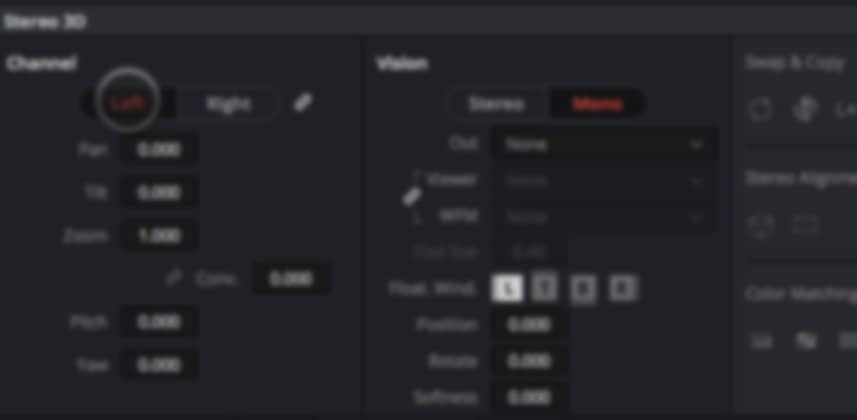DaVinci Resolve 12.5.1 Update: Digging Deeper Into The New Stereoscopic Features
In our Insight on the new features in DaVinci Resolve 12.5.1, I made special mention of the new Stereo features. I was a little amused since Stereo is a passing fad. And curious about why Team DaVinci decided to spend their very valuable and limited resources to build out this feature set?
Well – I got my answer while in Beijing for BIRTV 2016 and the announcement of Mixing Light’s partnership with Gaiamount – a Chinese language training site. As I mention in this Insight’s video, one of the other teachers was Alexis Van Hurkman. He shared with me the inside scoop about these new features.
The new Stereo features are designed to support HDR workflows
Specifically, they make it easy to use the Stereo tools for Right Eye / Left Eye color grading to do trim passes for Standard Dynamic Range (SDR) / High Dynamic Range (HDR) color grading. Of course, in this workflow we ignore most of the feature-set of the Stereo toolset. But it does open up several new interesting HDR workflows.
What you’ll learn in this Insight is which Stereo tools you’ll use – and which you’ll ignore. You’ll also learn how to work around a few gotchas. Plus, get a sense of why you want to stay super-organized once you start down this path.
One thing I don’t mention is how this workflow can be used for any ‘Trim Pass’ scenario
In theory, there’s no reason you need to restrict this HDR workflow just for SDR / HDR. Perhaps you did the color grade for theatrical and need to create a Blu-Ray trim pass? This workflow makes sense.
My initial sense is that there are more HDR workflow features and tools coming our way.
In prepping to record this Insight and playing with these tools myself, the first problem is we can’t assign separate color volumes to the right or left eye. Resolve also needs to better identify nodes that are different between the two eyes (or trims).
And why only two trim passes? Why not expand the feature set to support multiples of trim passes for the ever-expanding sets of deliverables that professional colorists are pressed into delivering?
These questions are low-hanging fruit that I’m guessing Team DaVinci is already working on.
Most of us won’t be using these new features for a while—but it’s useful to understand how these new workflows are developing. One day, you’re going to suddenly realize you’re working in HDR all the time. Like somebody flipped a switch on you. When that day comes you won’t have much time to get up to speed, so it’s better to get acclimated to these workflows now. And it’s fun to watch these feature sets develop, right in front of our (left / right) eyes.
Learn More About How to Create HDR and Dolby Vision
- What Is HDR and Dolby Vision and How Do You Create It? : This Flight Path Guide shows you all the Insights we have on Mixing Light about creating HDR and Dolby Vision content. Plus, it links to key external resources on this topic.
Enjoy!
-pi
Member Content
Sorry... the rest of this content is for members only. You'll need to login or Join Now to continue (we hope you do!).
Need more information about our memberships? Click to learn more.
Membership optionsMember Login


